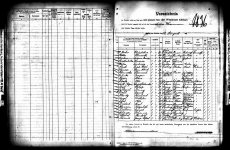Wow that's fantastic!
Thanks SO much and I will definitely add this info to the chapter I am including dealing with 'local experts' - currently occupied by Klaas of cuckoo fame and Kalinde Musiko.
Because I want to bring in a number of other crosscutting elements - conservation, gender, the reliability of historical records, colonialism - I am also including in this chapter material to do with ethics: the need to collect dead specimens in order to verify identification, for example. An issue that I recall has been in the news recently with regard to another bird (details escape me right now).
I also found a nice translation of the Le Vaillant content to do with his friend, Klaas so I am getting there. Are we using Levaillant or a different version - it seems there are a number of iterations used interchangeably?
And of course I can use the Abidin/Abdim debate to discuss the difficulties of carrying out research/using translated materials.
Every time I start to lose motivation, someone on this thread inspires me over again.
M
PS By way of perhaps helping a tiny bit in return for all the assistance I have got so far, 'Baster', though a translation of 'bastard' at some point in history no doubt is, in fact, the correct and proudly-used name for a discrete community of indigenous people of mixed ancestry. In Namibia they are so separate from other local communities in terms of culture that they still even have their own laws. More info can be found at: http://rehobothbasters.org/
Thanks SO much and I will definitely add this info to the chapter I am including dealing with 'local experts' - currently occupied by Klaas of cuckoo fame and Kalinde Musiko.
Because I want to bring in a number of other crosscutting elements - conservation, gender, the reliability of historical records, colonialism - I am also including in this chapter material to do with ethics: the need to collect dead specimens in order to verify identification, for example. An issue that I recall has been in the news recently with regard to another bird (details escape me right now).
I also found a nice translation of the Le Vaillant content to do with his friend, Klaas so I am getting there. Are we using Levaillant or a different version - it seems there are a number of iterations used interchangeably?
And of course I can use the Abidin/Abdim debate to discuss the difficulties of carrying out research/using translated materials.
Every time I start to lose motivation, someone on this thread inspires me over again.
M
PS By way of perhaps helping a tiny bit in return for all the assistance I have got so far, 'Baster', though a translation of 'bastard' at some point in history no doubt is, in fact, the correct and proudly-used name for a discrete community of indigenous people of mixed ancestry. In Namibia they are so separate from other local communities in terms of culture that they still even have their own laws. More info can be found at: http://rehobothbasters.org/






